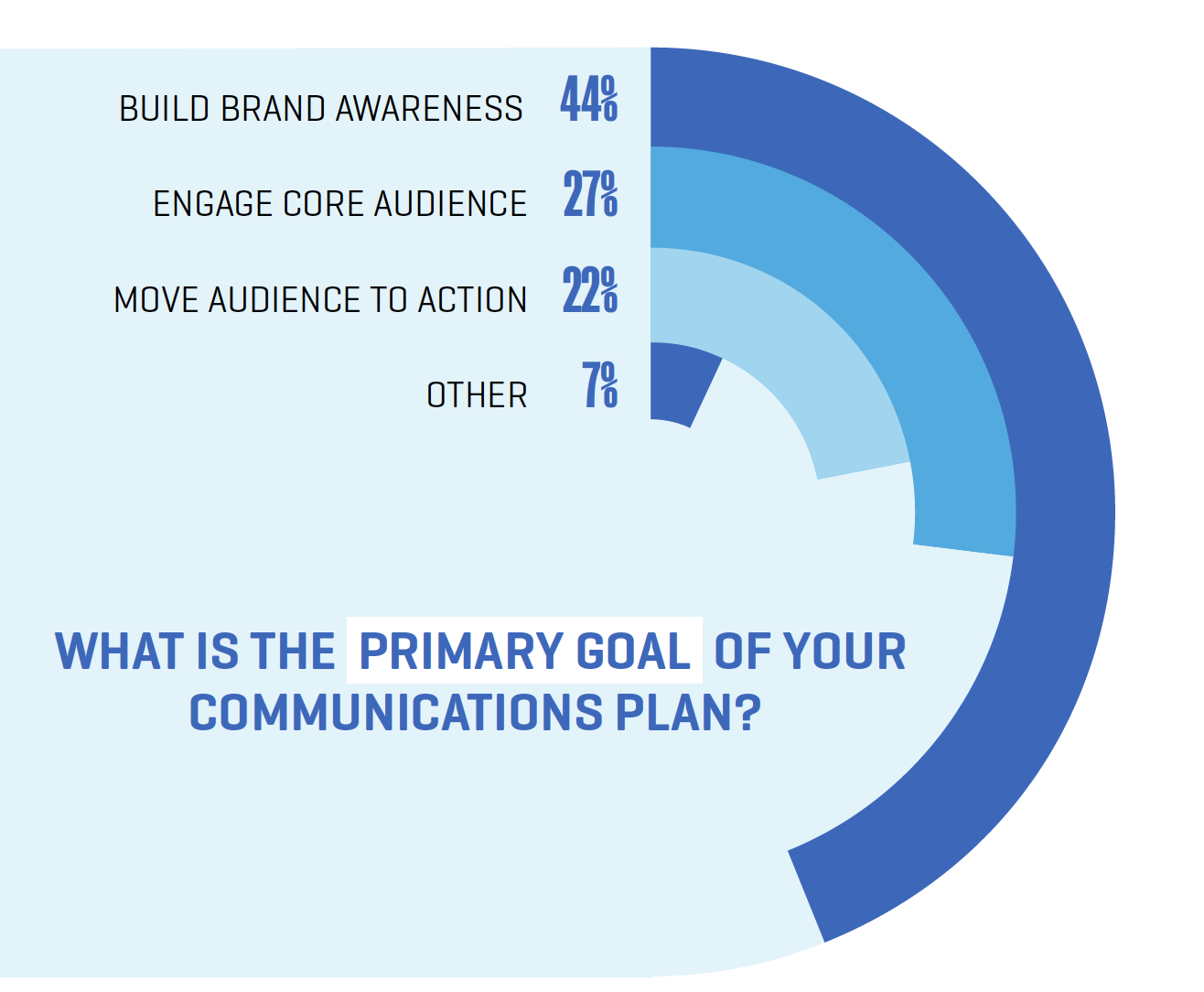
Washingtonian Custom Media’s first part in our newest survey series has collected valuable information regarding industry leaders and their communications plans. We previously shared what we learned about communications teams, and now we’re turning to communications goals.
Communications Goals
Brand identities are shaped by an organization’s values and mission. These are the fundamental beliefs and objectives of the organization that inform all business decisions and behaviors. In nonprofits, where fundraising and issue awareness are common goals, directing donations, advertising a campaign, or collecting petition signatures would be elements of an organization’s communications plan, and their communications plan goals would in turn reflect these features.

Inspiring action and motivating engagement from an existing audience comprised nearly half of survey respondents’ communications goals, which is unsurprising considering the kinds of organizations surveyed and the close connection between these two goals. Inspiring action can include audiences donating to a cause, signing petitions, and other marked fulfillments of calls to action, while engagement includes liking, commenting, and sharing digital content. Surprisingly, neither of these communications goals were the single majority, though; a significant proportion of respondents (44%) reported wanting to build connections with wider audiences. Audience development strategies focused on specific target groups work best to build brand awareness and gain a larger, dedicated following. This includes conducting research for generational marketing and platform-specific research to inform the creation of tailored content. With thorough research and tailored messaging, brands can reach, and keep, new audience members.

Communications plans must be measurable over time to determine successes and identify future aims for improvement. When asked how often their organization updates their communications plans, 39% of respondents reported reviewing every six months while 28% review annually. The majority preference for annual or semi-annual reviews allows for teams to revisit ongoing goals, assess performance, and fine-tun to achieve long-term goals and learn for future endeavors. Staff performance reviews are usually conducted with a similar frequency; it makes sense to examine a team’s strategic strengths and weaknesses regularly, too.
Tune in next week for the third and final installment of our communications plans insights.
